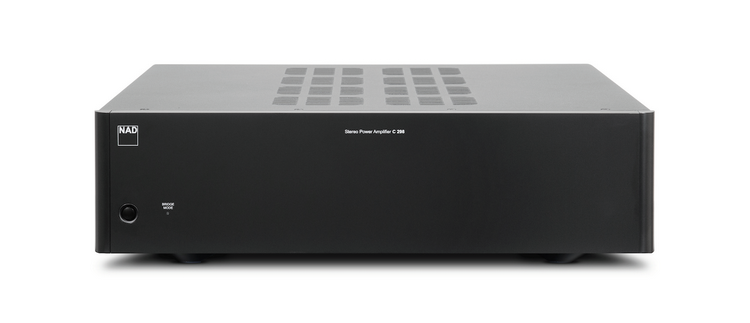Review: NAD C 298: NAD has scored enormously with the M33, an all-rounder amplifier with everything you could wish for on board and just about the first device with Purifi’s EigenTakt amplifier on board. However, anyone who already has a streamer, DAC or preamplifier needs something else. And hello, there is the C 298. This power amplifier looks simple, but gives you a quick way to upgrade your music set with the acclaimed Eigentakt amplification.
Let’s zoom right in on what anyone who sees the C 298 will think: this device doesn’t look exciting. It is a sober, black box with an on / off button and an LED that is hardly noticeable even in a darkened room. But come on, suppress that yawn for a little while longer. This black box of NAD is simply not meant to arouse desire. Not with its looks, but what is under the hood is very stimulating. We have it then – what do you think? – about Purifi’s class D EigenTakt amplification, which is praised in so many quarters and makes just as many hi-fi connoisseurs mouth-watering.
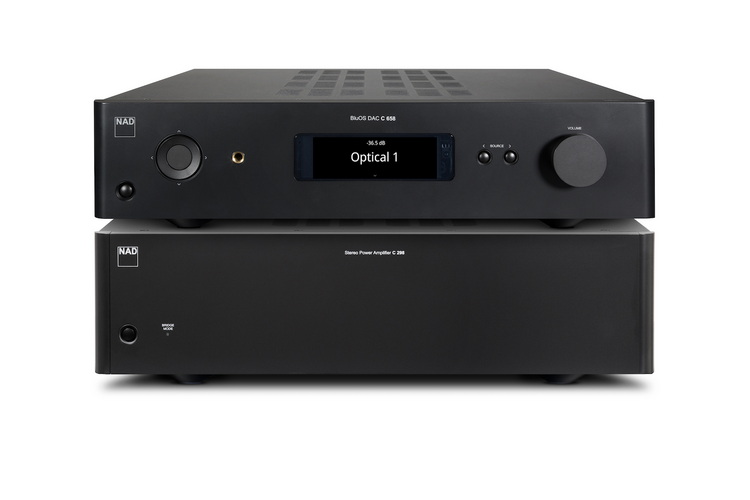
Why? This all has to do with the names of Lars Risbo and Bruno Putzeys who dangle from EigenTakt as inventors. These two gentlemen are somewhat of a hi-fi superstars, thanks to the various innovative audio products that have appeared in recent years. Consider, for example, the many high-flyers from Mola-Mola and the powerful active speakers from Kii Audio.
Second Purifi first
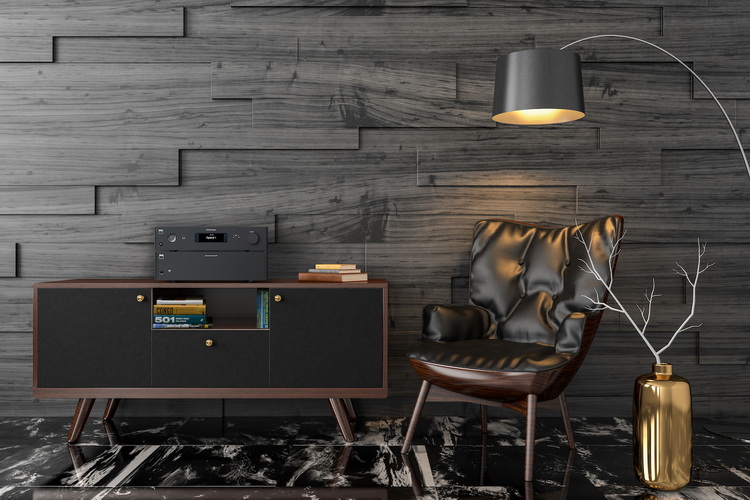
The C 298 is therefore the second Purifi first for NAD after the M33 . A third will be added soon, the M28, a seven-channel output stage based on EigenTakt modules. The amplification modules may be freely available on the market, so that other companies and hobbyists can get started, but it is the Canadians who clearly got a head start to be the first mainstream brand to use Purifi.
In the coming months you will probably see other brands coming out with Purifi amplification. What we do not expect is that you will suddenly see amplifiers from smaller DIY brands that are a lot cheaper than EigenTakt products of larger hi-fi names. That was the case with nCore. But as we understand it, the EigenTakt modules will always bear a higher license cost to ensure that the designers at Purifi are remunerated more fairly. That is allowed – and immediately gives some context to the 1,999 euro price tag of the C 298. Given the technology it uses, the price can be called sharp.
NAD C 298: Classic, but not
The concept of the NAD C 298 is a classic power or power amplifier without its own controls, good for a power of 2 x 185 Watt (2 channels fully loaded and at 8 Ohm). On the outside, it looks almost identical to previous NAD Classic series power amplifiers, a series of devices that show off an uninviting design language. Love at first sight, we don’t think so.
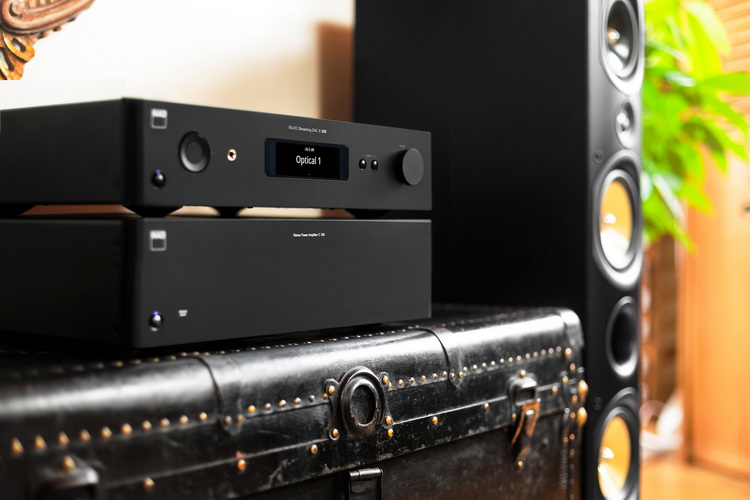
You have to combine the C 298 with a separate pre-stage or amplifier. In addition, you may have to provide one or more sources, depending on whether the preamplifier has built-in streaming or not. We will go into that in a moment, but you already know that it is a device that fits in an old-school hi-fi system with multiple components.
For those who do not feel like such a ‘tower of power’ in the living room and are already giving up: there is another way. The C 298 has the trigger connections and an adjustable auto-sense function so that you can also tuck the thing away somewhere in a cupboard if you wish. If you want to tackle it very subtly, you can even ban the device to the technical room – although you will of course have to do the necessary in terms of cabling. Thanks to that trigger and auto sense, the NAD amplifier switches on automatically when you start playing music.
Dream wedding
The obvious candidate to take on the role of preamplifier in this story is the C 658. It is a device that NAD introduced last year and is much more than a simple preamplifier. On the contrary, we even called it a Swiss army knife of the hi-fi in our review. Okay, okay, in hi-fi journalism that’s one of the Big Clichés, along with “I got goosebumps,” but in this case it was completely appropriate. In fact, thanks to the built-in DAC, the BluOS module and Dirac software, the C 658 is one of the most versatile hi-fi devices you can find on the market today.
You can connect all kinds of physical sources to it (including a turntable), stream via a number of streaming platforms and optimize your acoustics via the Dirac function. Slide the appropriate MDC expansion card into the C 658 and you even have HDMI inputs and an HDMI-ARC connection to connect to your television. There is actually little it cannot and what it does it does at a higher level.
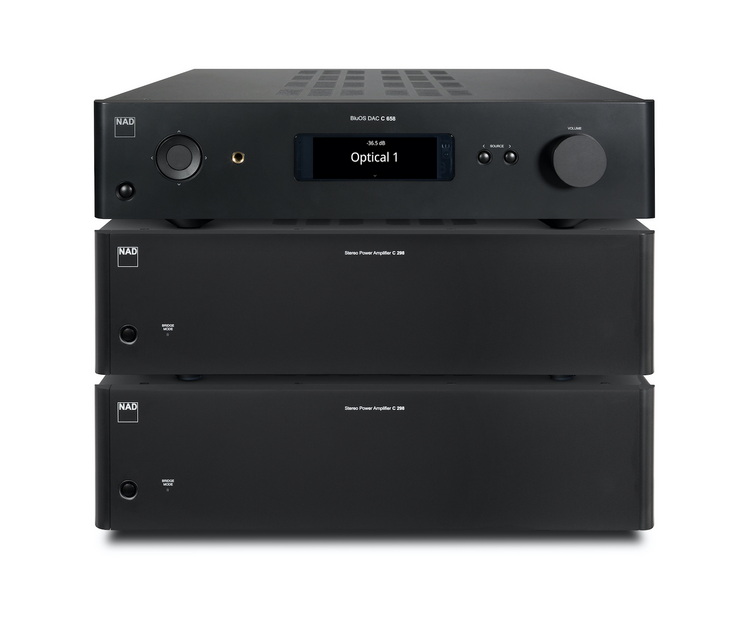
Although there is always room for improvement. For those who are in doubt between the combination C 658 and C 298 versus the equally versatile M33: in addition to the obvious difference in industrial design, the double DAC hatch in the Master device is nevertheless higher specified. We were also told that the gain stage in the M33 is a bit better.
The C 298 can of course also be combined with another DAC / preamplifier. It is not a NAD-only solution. For example, during testing in between, we also linked it to a Mytek Brooklyn Bridge , a Primare PRE35 and just to do something eccentric: a Chord Hugo 2 with a 2go . There are countless other options. You just have to make sure that whatever you put in front of the C 298 has a volume control, because as you would expect there is no volume knob on the understated NAD.
One or two pieces?
You won’t find many inputs on a device like the C 298. Logical. Connecting sources? You do that on the preamplifier. From this pre-stage you leave with a few cinch cables or (better, if possible) with two balanced XLR cables to the NAD power amplifier. You may take longer unpacking the box than connecting cables to this device. Oh yeah, you don’t have to lift your fracture when you lift the NAD out of the box. An advantage of class D is that it is light and compact. Well, it is not a featherweight, because the nutrition is still quite strong to easily take any dynamic peaks.
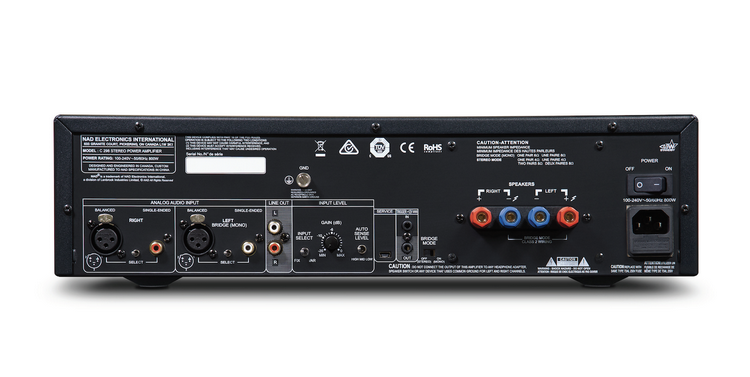
You can safely call the C 298 a hefty output stage in terms of power. NAD specifies a 185 Watt power when you connect 8 Ohm speakers, with a peak power up to 570 Watt. That is quite a lot, even if it is slightly less than the M33. But of course it costs a lot more, even if you include the cost of a C 658: 5,499 euros. You can also trump that topper by connecting two C 298s in bridge mode. Not a cheap option, but you do end up with 620 Watts of Purifi power (with a peak power of 1,000 Watts).
Why the hype around Purifi?
EigenTakt can be seen as more than a little bit the spiritual and technical successor to nCore, the amplification technology that until recently was considered the pinnacle of class D and was also designed by Putzeys. NCore has now lost that championship title, although that certainly does not mean that the technology is now suddenly outdated. To put it figuratively: if you are behind an EigenTakt steering wheel, you can still see nCore looming large in the rear-view mirror.
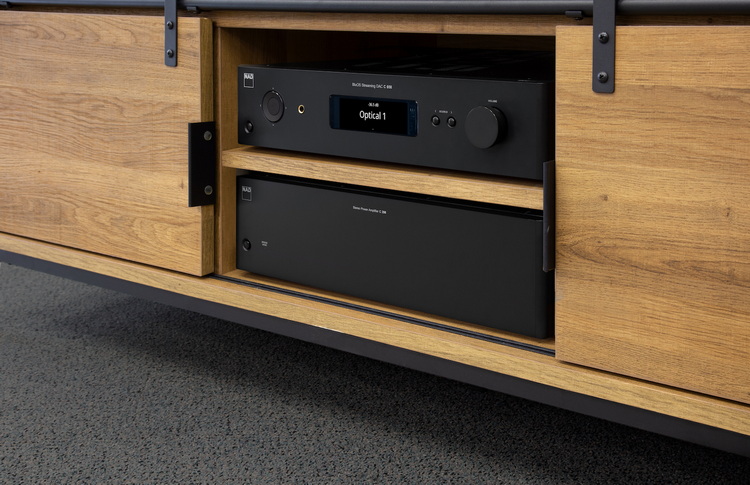
What makes EigenTakt so interesting is that Purifi’s folks have tried to get all possible distortion out of the Class D amplifier process. They do this with a self-oscillating design (hence the name EigenTakt) that strongly focuses on different types of feedback (precisely to eliminate the distortion of the electronic parts). The end result is a stable amplifier that, according to the designers, does not care about the behavior of the speakers (their impedance curve). The ultimate goal of an amplifier like a ‘wire with gain’ is thus apparently approached, although of course you have another gain stage that can have an impact on sound.
NAD C 298: Testing
It is interesting to occasionally switch between the C658 and the two other preamps that we have in the test room. The NAD streamer / DAC is of course a bit ‘hors category’ as it offers Dirac, which has a significant impact on the rendering. In a positive sense, as far as we are concerned. Of course depends on how you feel about DSP interventions. But if we turn this feature off for a moment – its use is not mandatory – we can better compare. The great thing about the pure EigenTakt amplification is that it doesn’t add anything, which in this case shows very nicely the differences in terms of DA conversion between the NAD C 658, Mytek Brooklyn, the Chord DAC / streamer and the Primare PRE35 (we keep the source right: streaming via Roon, it must be via Google Cast with Primare).
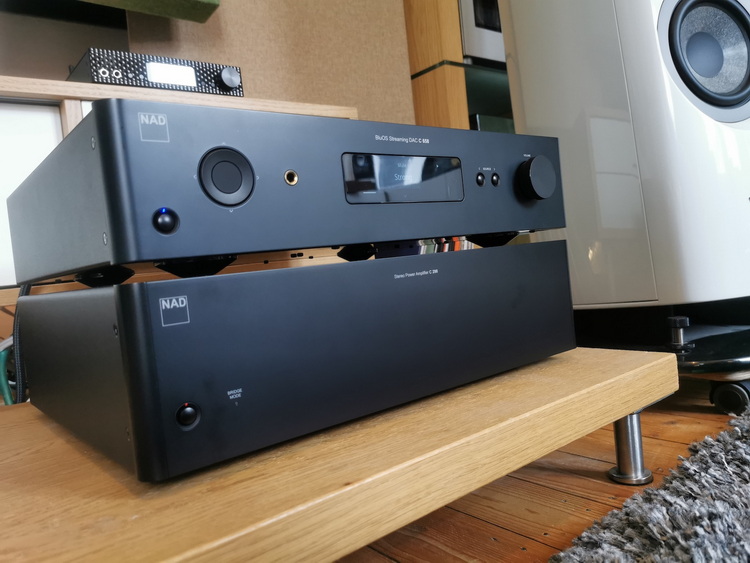
However, this is less about the differences between those four devices, but the fact that the C 298 shows the true character of those DACs. The same when it comes to the speakers, which of course have an immense impact on the sound you experience. That does not make the C 298 soulless, far from it, but makes matching in a system context somewhat easier. In a search for your ideal sound, you can focus even more on finding reproducers and sources that you like. The downside: you can’t count on the C 298 to mask shortcomings.
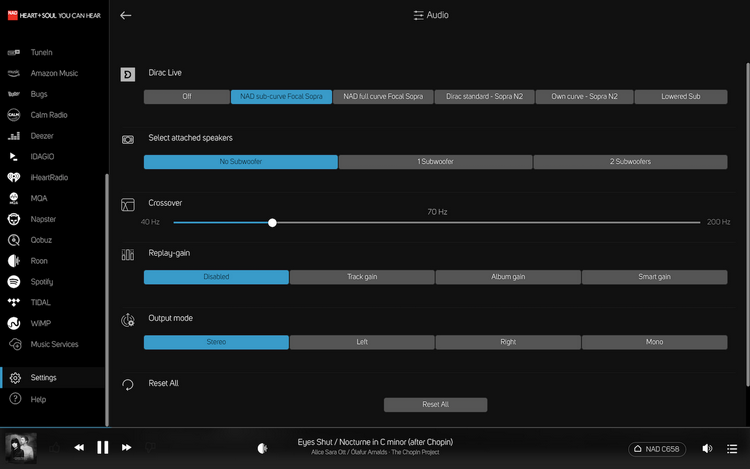
Apart from the session ‘Compare DACs’, we mainly listened to the combination C 658 and C 298 connected to our Focal Sopra N ° 2s. Usually also with a Dirac correction based on NAD’s target curve, limited to 500 Hz. As we travel through our eclectic test playlist from Lorde’s ‘Green Light’ and ‘WHO KILLLED BAMBI’ to ‘Last Things Last’ by Rachel’s and Peter Gregson’s interesting Bach Recomposed album, it strikes time and again that nothing stands out. Before you take that as a devastating criticism, it’s just the opposite, as far as we’re concerned. It’s a very different experience than when we saw the handsome Model from Marantz a while agoreceived a visit. Also beautiful (and of course it is an integrated amplifier), but also with a very specific sound. You don’t have that with the C 298, and that’s exactly the intention.
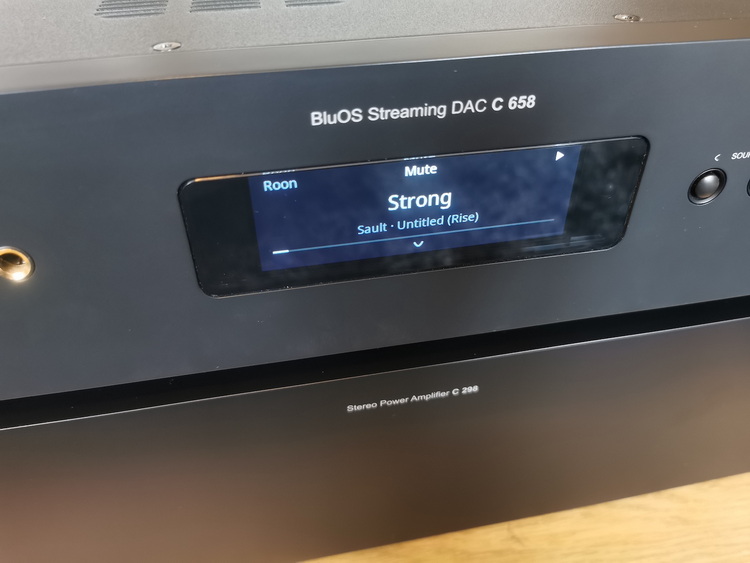
Coincidentally, the M33 also reappeared in the listening room while testing the C 298, and we were able to switch easily between the Classic combo and the Masters all-rounder. Very fascinating to do, because we suspect that a number of music lovers hope to get the same thing as the M33 with the C 298 and C 658 – but for significantly less money. We have to admit it would be a difficult choice for us too. The M33 is without a doubt more insightful, more powerful, more handy, tighter and more beautifully built – that’s a lot of goals in the net. But the Classic NAD combination really delivers a lot of the experience purely in terms of sound quality.
Conclusion
A must-have upgrade for your hi-fi set or a pretty perfect addition to a good DAC / preamplifier, and that for a reasonable price. That’s in a nutshell what the NAD C 298 has to offer. Thanks to the groundbreaking EigenTakt amplification, you can count on a spectacular reproduction, with excellent control and purity that reveals exactly what a connected DAC / preamplifier got out of a recording. Your speakers are also optimally controlled, however demanding and fickle they behave. Step into bridge mode and you’ll have more power than you’ll ever need.
PLUS POINTS of NAD C 298
- Absolute control
- 185 Watt reliable power
- Bridge mode possible for extreme power
- Neutral, little coloring
MINUSES of NAD C 298
- Doesn’t look exactly sexy
